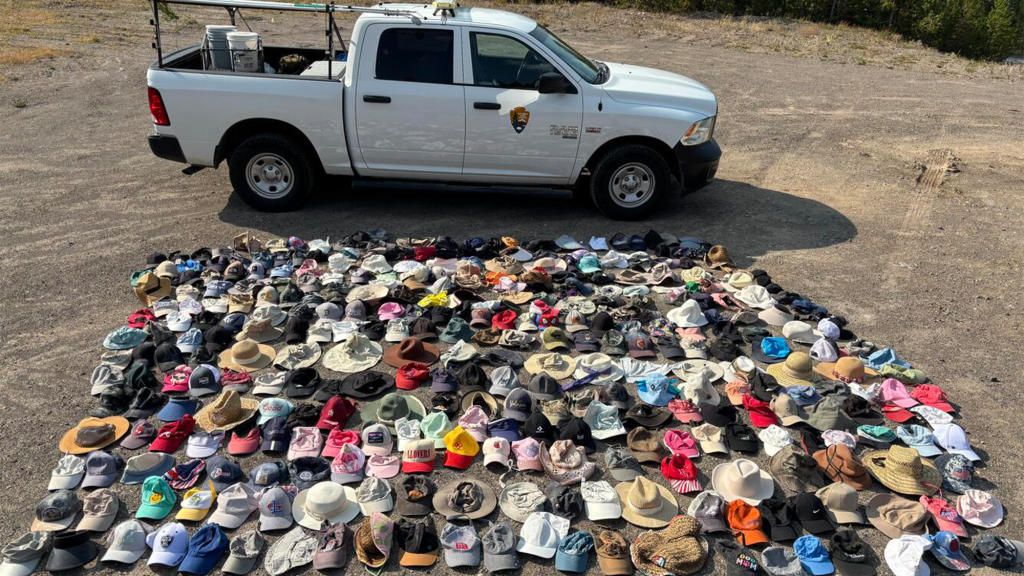It’s a bird! No, it’s a plane! No, it’s your hat, ripped off your head by a gust of wind, spiraling off into the unknown. It’s happened to the best of us. The only thing left to do is purchase another before your face gets sunburnt. Soon, the destiny of your former hat, along with everyone else’s, is far from mind—except for one special team at Yellowstone National Park.
So far this year, the National Park Service geologists at Yellowstone have recuperated over 300 hats from hydrothermal areas. Altogether, they estimate the accessories to be worth as much as $6,000. This summer they also collected a pizza box with pizza slices still inside, a fake Louis Vuitton bucket hat, and a ball cap with “I PEE IN THE LAKE” on it.
“When recreating or working in Yellowstone National Park, it’s not uncommon to stumble across a team of National Park Service geologists in distinctive red safety vests. These folks are part of Yellowstone’s Geology Program: a specially trained team dedicated to protecting, remediating, and studying Yellowstone’s incredible geology and hydrothermal features,” Margery Price, a physical science technician at the Yellowstone National Park Geology Program, wrote in a weekly Yellowstone Caldera Chronicle story.
The hat collection is just one part of the team’s hydrothermal area cleanup responsibilities. According to Price, more than four million people visit Yellowstone every year. Luckily, the geologists think that most of the trash they gather (over 13,000 pieces just this year) is typically spread by mistake due to the region’s strong winds and the sheer number of tourists.
[ Related: Don’t lick the toads and other things to avoid at national parks. ]
When the object is in a particularly tricky area—say, a pool of boiling water—the team has to get creative, as their variously-sized grabber poles (some are 30 feet long!) don’t always fit the bill.
They also have to remove sticks and rocks that visitors sometimes toss into thermal springs. While those natural objects may seem , throwing them incan permanently alter a hot spring’s nature. It can lower the can lower the temperature, change its color, and even alter its eruptive activity.

However, the team is more than just a tourist clean up squad. They also collect scientific data from the park’s natural formations and help install and maintain scientific instruments, among other tasks. So far this year, the team has walked across over 1,300 miles of trails and boardwalks and driven over 11,000 miles to get the work done.
Moral of the story: if you visit Yellowstone, keep a hold of your off-brand hats and pizza boxes!


